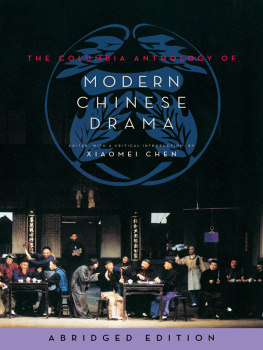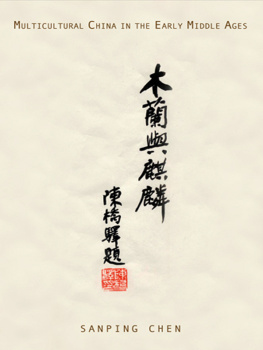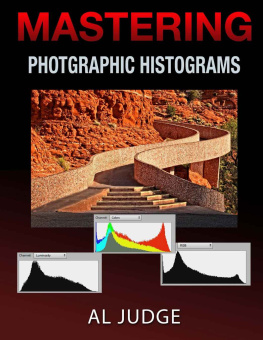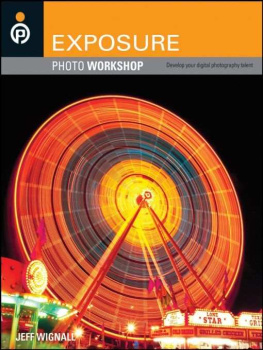

About the Author

PHOTOGRAPH BY ROSIE ISRAEL.
Mark Chen is a photographer, a digital media artist, and an activist. Based on still images and videos, he expands to media including animations, soundscapes, installations, and performances. The narratives in his work aim to raise awareness of sustainability and climate change, among other environmental and social issues. Chens exhibition path traverses locally, nationally, and internationally, including the Houston Center for Photography, Fotofest (Houston), the Arc Gallery (San Francisco), and the Artists Cabin (Taipei, Taiwan).
In addition to his career as an artist, Chen is an educator who has taught at the University of Houston, Houston Baptist University, and Houston Community College, among other institutions. He is also an avid published author, producing seven book titles on photographic art and techniques from Amherst Media. These titles include Creative Wedding Album Design with Adobe Photoshop, Flash and Ambient Lighting for Digital Wedding Photography, Unleashing the RAW Power of Adobe Camera Raw, Professional HDR Photography, Mastering Exposure, Mastering Composition for Photographers, and a forthcoming book on using your cell phone to create stock photography.
To learn more about Mark Chen, visit www.markchenphotography.com.
Thanks to David Finckel, Wu Han, Chelsea Shannon, Tatyana Serrano, Olive Chen, Marcia Chen, Dominica Dancewisz, Carmen Champion, Ruth Gonzalez Vital, and Kame Khadivian. You made this book beautiful.
Copyright 2016 by Mark Chen
All rights reserved.
All photographs by the author unless otherwise noted.
Published by:
Amherst Media, Inc., P.O. Box 586, Buffalo, N.Y. 14226, Fax: 716-874-4508
www.AmherstMedia.com
Publisher: Craig Alesse
Senior Editor/Production Manager: Michelle Perkins
Editors: Barbara A. Lynch-Johnt, Harvey Goldstein, Beth Alesse
Associate Publisher: Kate Neaverth
Editorial Assistance from: Carey A. Miller, Sally Jarzab, John S. Loder
Business Manager: Adam Richards
Warehouse and Fulfillment Manager: Roger Singo
ISBN-13: 978-1-60895-958-7
Library of Congress Control Number: 2015944874
10 9 8 7 6 5 4 3 2 1
No part of this publication may be reproduced, stored, or transmitted in any form or by any means, electronic, mechanical, photocopied, recorded or otherwise, without prior written consent from the publisher.
Notice of Disclaimer: The information contained in this book is based on the authors experience and opinions. The author and publisher will not be held liable for the use or misuse of the information in this book.

www.facebook.com/AmherstMediaInc
www.youtube.com/c/AmherstMedia
www.twitter.com/AmherstMedia
Contents
Guide
Contents







L ike musicians, painters, chefs, and astrophysicists, photographers require two major skill sets: technical and creative. The proportional balance between technique and creativity might differ according to your profession, personality, or career level (amateurs are also on a career path as they advance in their pursuit). For photographers, technique and creativity have rather equal importance.
If we consider each photographic project a journey, technique is the road map. Before everything, there is an idea that is the planned endpoint of the journey. The road map helps us to assess the viability: Can we get there? It also enables the planning: Which route should we take? How laborious will it be? What gear is required? When can we get there? If we encounter difficulties along the way, the road map also helps us to maneuver around them. Technique is what makes creativity possible.
Just as bold travelers explore domains that lie off the beaten path, bold photographers attempt projects they might not yet know how to accomplish. With solid technique as a road map, they know they can get to a never-before-visited destination. From there, creativity drives the process and outcome to a higher level.
Capture and postproduction are two distinct sets of photographic techniques. Capture is the process of creating original images in the camera. Our goal should be to produce, in the camera, high-quality captures that realize our vision as fully as possible. When these goals are achieved, we have good materials to work with in the postproduction phase. This book is about both phases of the process. It is a field guide for photographers to use with camera in hand, but it also covers the postproduction techniques for refining your results.
The life cycle of a photo (or the photographic workflow, to use a more technical term) begins with exposure. The process of exposure is more complicated than ever, thanks to the ever-increasing complexity of digital cameras. This book will examine that seemingly complicated process, simplify it, and make exposure and metering techniques easier to master. Be sure to work through each of the hands-on exercises and advance your skills to a point where metering for and capturing the right exposure becomes almost second nature.
Cell phone cameras are achieving amazing levels of quality. The shots I make on my Samsung S5 (when I do not have my DSLR handy) sneak into my serious work from time to time. However, cell phone cameras are not good learning tools. They do not let you control the exposure settings and they veil all the nuances. To be blunt, they assume the user knows nothing. Cell phone cameras are to a photographer as instant noodles are to a chef; they might taste good, but they wont get you anywhere if they are the only thing you use. So keep that cell phone camera in your pocket for now. Pick up that DSLR and learn photography with me, starting from exposure.
Just as bold travelers explore domains that lie off the beaten path, bold photographers attempt projects they might not yet know how to accomplish.
Photographers work with light. But unlike painters who observe and re-create the light theyve seen, photographers record the light precisely using camera equipment. We call this task
Next page





















